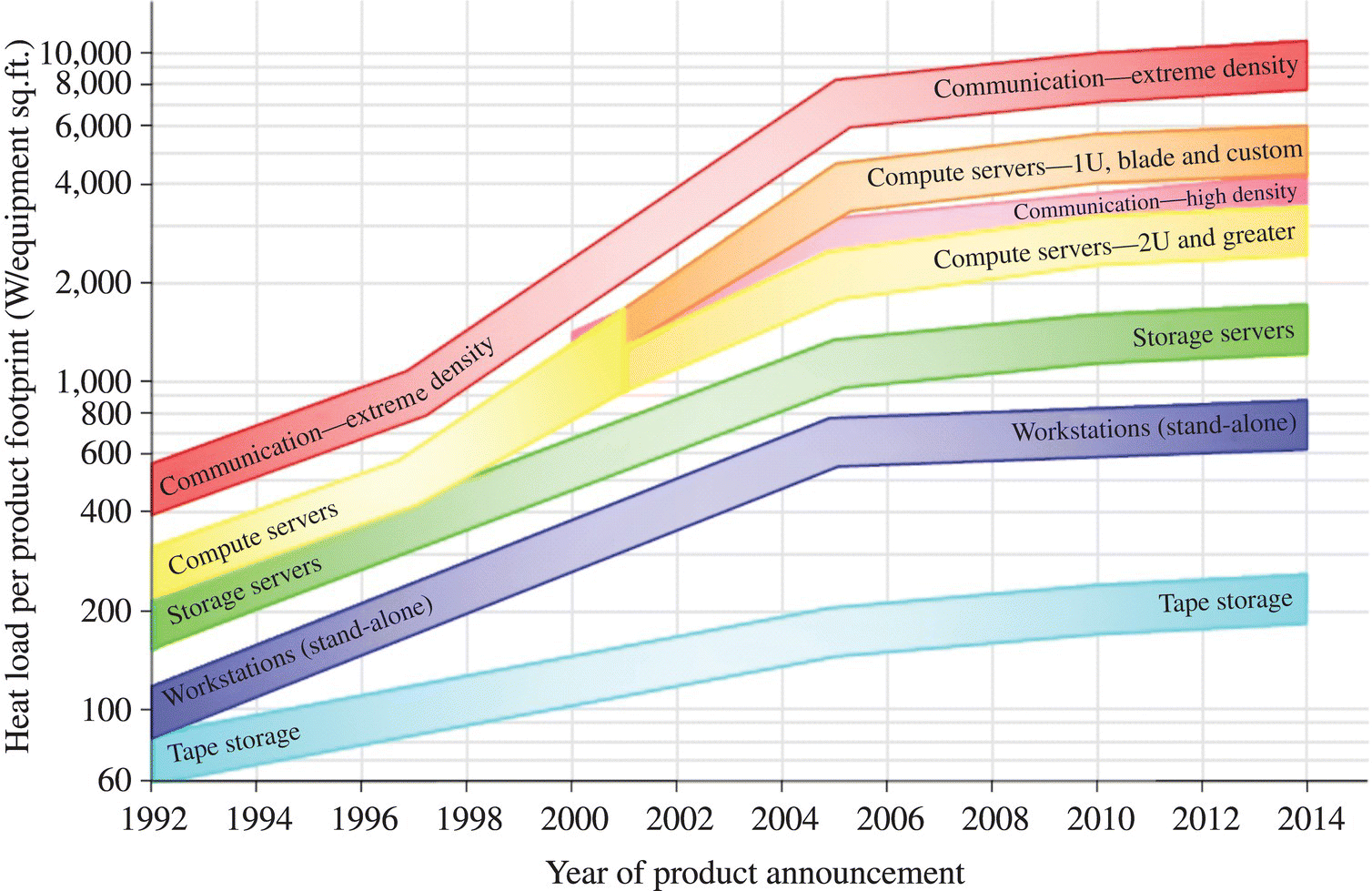18Environmental Control of Data Centers
Veerendra Mulay
Facebook, Inc., Menlo Park, CA, USA
18.1 Data Center Power Trends
In recent years, data center facilities have witnessed rapidly increasing power trends that continue to rise at an alarming rate. The combination of increased power dissipation and increased packaging density has led to substantial increases in chip and module heat flux. As a result, heat load per square feet of server footprint in a data center has increased. Recent heat loads published by ASHRAE [1] as shown in Figure 18.1 indicate that for the period 2000–2004, heat load for storage servers has doubled, while for the same period, heat load for computer servers has tripled.

Figure 18.1 Heat load trends [1].
Courtesy of ASHRAE.
According to these trends, compute server rack heat fluxes in 2006 were around 4000 W/ft2. This corresponds to 27 kW for a typical 19 in. rack. There are 19 in. racks commercially available in markets that dissipate more than 30 kW, which corresponds to 4800 W/ft2 rack heat flux.
18.2 Thermal Management of Data Centers
This rapid increase in the heat load per server footprint has resulted in an equal increase in the research on how best to tackle this problem. Numerous research articles, papers, studies, and guidelines have been presented [1–106] that describe the work done in the area of thermal management of the data centers. ...
Get Data Center Handbook now with the O’Reilly learning platform.
O’Reilly members experience books, live events, courses curated by job role, and more from O’Reilly and nearly 200 top publishers.

